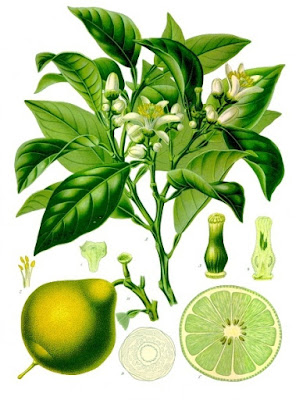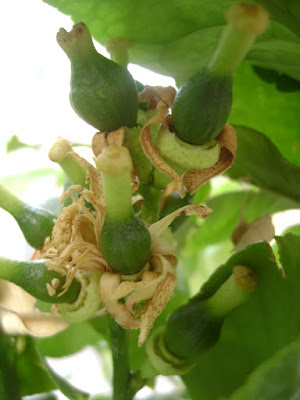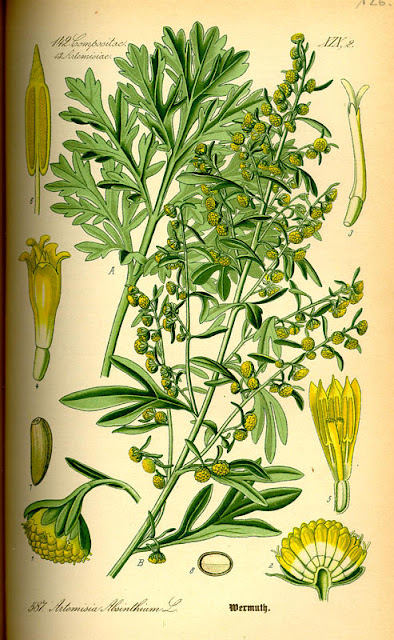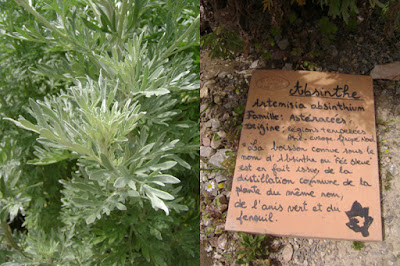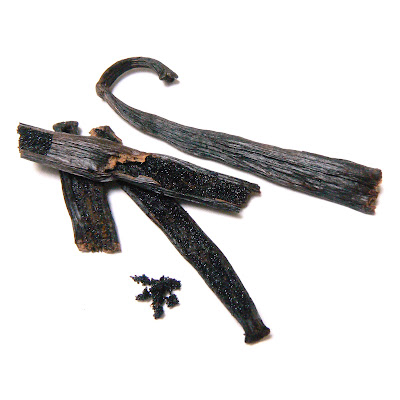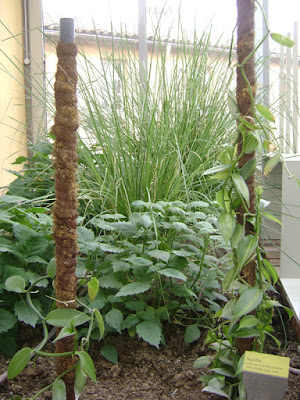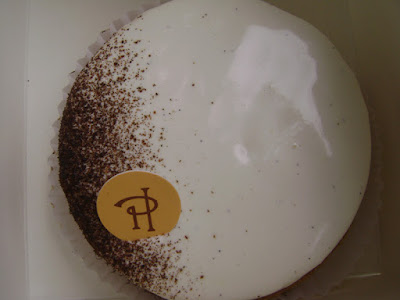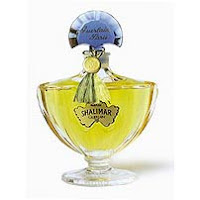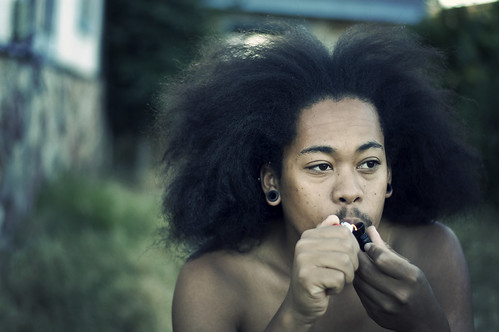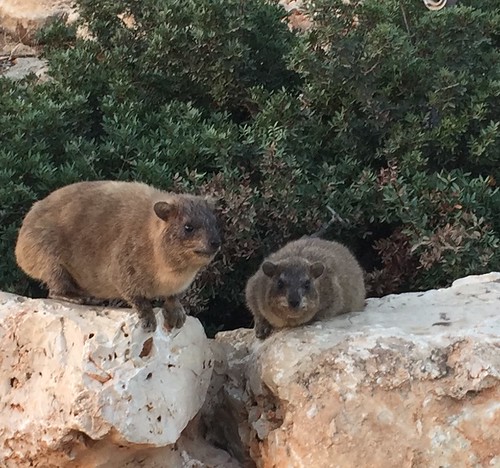Vanilla is synonymous with the aroma of pastry baking as well as pleasing the common taste of the masses. It is the most popular ice cream flavour in the world, and is what makes Shalimar and a myriad of other Oriental-Ambery fragrances so beloved. But vanilla as a spice or flavouring has not always been associated with sweetness. The Aztecs steeped their sacred cacao beverages with vanilla and chilli, and the savoury is practiced in contemporary Mexican cuisine. Due to climate change and natural disasters in Madagascar, the country that is responsible for the majority of the world's production, we may not be able to enjoy vanilla ice cream as often as we are accustomed to. At least not with pure vanilla beans.
The term "Plain Vanilla" is the simplest, most basic form of things, lacking innovation or pizzazz in its design or characteristics. "Vanilla Software" is code that is so generic it can be potentially sold to any client, but at the same time be rather unsatisfactory because the customization hasn't been put in place yet. "Vanilla Sex" is a rather judgemental term for conventional sex, alluding to the persons preferring it being unadventurous, unimaginative, and generally boring.
True vanilla extract, however, is anything but boring!
Up until the 15th Centruy, vanilla was closely guarded by the Totonac people - first people of Mexico. In the mid 1400s, they were conquered by the Aztec and used vanilla fruits to pay them. The Aztecs adopted "Tlilxochitl"and incorporated it into their ceremonial cacao libation (along with masa harina, chilli and honey). In 1520, Hernán Cortés conquered the Aztecs and was greeted with this beverage. He took with him to Europe many of the botanical treasures he found, including cacao, vanilla beans, tomatoes and chilli peppers. It was not until about 300 years later though, that vanilla would produce any fruit - which happened in one of the French colonies in the Rénunion. But more on that later. 
The name vanilla originates from vainilla - a dimuniative for "vaina" (from the Latin word "vagina", meaning "sheath"). So "a little sheath" because of the shape of the vanilla fruit (or seed pods), which looked like a tiny sheath for placing a sword or a dagger.
Botanical name(s): Vanilla planifolia
Synonyms: Vanilla fragrans, Common Vanilla, Mexican vanilla, Bourbon vanilla, Reunion vanilla, Madagascar Vanilla.
Other species of vanilla: Vanilla pompona (AKA West Indian Vanilla), which is grown in the West Indies, Central and South America. This variety is less known commercially.
Vanilla tahitinesis (Tahitian Vanilla), which grows in the South Pacific (cultivated in French Polynesia), is possibly a hybrid between V. planifolia and V. odorata. It is speculated that it originated in Guatemala, and arrived in the Philipinnes by the Manilla galleon, and finally brought to Tahiti by the French admiral François Alphonse Hamelin. This vanilla species has a distinctively different aroma, more floral and less woody-animalic than the V. planifolia, and with a very sweet-pastry-powdery presence, reminiscent of heliotrope.
Most of the world's production (about 80%) of vanilla beans is in the island of Madagascar, off the southeast coast off Africa (the closest neighbouring country on the continent is Mozambique). In March 2017, the cyclone Enawo struck the island of Madagascar, damaging two of the largest vanilla-growing regions in the country. Because ripe and cured vanilla beans are such labour-intensive to produce, as you will shortly discover; and because new crops begin to bloom and produce fruit only when mature (which takes between 3-4 years), this cyclone has a global effect on the availability and price of vanilla. In 2018, vanilla prices have risen to 30-fold their price comparing to 2013 ($600 vs. $20 per kilo), which is more than the cost of silver! Prices have began to decline but are still prohibitively expensive, to the point that many ice cream producers are taking their vanilla-ice-creams off the menu or replacing it with artificially flavoured ones. As a result of this astronomical hike in price, crime has gone rampant in Madagascar, with the crops that remain stolen and vanilla farmers living in constant fear for their livelihood. Some measures have been taken, such as stamping each vanilla bean with the farm's serial code. But in reality, this hike has done more damage to the producers than any good (and of course the pastry chefs and natural perfumers aren't enjoying it either). Despite the grim predictions in 2017 that vanilla bean production (and prices) will be problematic for about seven years, and forecast now seems more optimistic. Additionally, more countries who can and have grown vanilla (some in Africa, such as Ghana, Ivory Coast, Cameron, and Nigeria; and India and Indonesia in Asia; and even Mexico) - are taking advantage of this gap and finding new markets. This is hopefully solving a problem that is not to blame on this one cyclone only. In reality, Madagascar's monopoly on vanilla was threatened by other poor crops since 2014. And it has for many years been a goldmine for various opportunists who use vanilla as a money-laundering channel, for example: illegal Madagascan rosewood traders would dispose of their cash by purchasing vanilla beans, a commodity in much demand that can easily be sold to about a dozen of intermediaries who distribute it world-wide.
However, this cyclone's stark results has forced the world to take a closer look at the corruption surrounding the vanilla trade (as well as other commodities, such as cacao and coffee beans), and take more responsibility over how its done. It is a tragically ridiculous situation, when crops get such high prices and the communities who farm them are still living in extreme poverty and are increasingly threatened by crime.
Vanilla is a climbing orchid native to Mexico and Central America, and is the only orchid whose extract is used for its fragrance in perfumery (other "orchid" fragrances are usually manmade compounds, either imaginary or "fantasy" floral formulas, or based on real-life by using headspace technology - which recreates the scent the flower emits from synthetic molecules). Vanilla grows like a vine and needs to climb on a structure to come to its full potential of flowers and fruit. It may appear to be a parasite, because it supports itself on tree trucks with tiny and very strong hooks - but in fact it does not rely on the tree for nourishment, which it derives honestly from the soil and sun. 
Vanilla flowers are greenish-yellow in colour, with a diameter of 5 cm (2 in). The bloom only for a day, providing a very short window for pollination in the morning hours, in order for them to bear fruit. In their natural habitat in Mexico, the flowers are pollinated by the Mellipona bee - a tiny insect with very long trunks, who transfer the pollen from one part of the flowers to another (the anther to the stigma). The insect provide only a 1% pollination rate among the flowers - the remaining 99% drop to the ground the next day. This scientific discovery was made in 1836 by the Belgian botanist Charles Morren. He also tried, to develop a pollination alternative that will make vanilla a commercially-viable crop, but to no avail. His technique was too cumbersome.
In commercially grown vanilla, the flowers need to be hand-pollinated even in its native country - because one cannot count on minuscule bees to do all the pollination and let the rare flowers go to waste. The technique for hand-pollination was developed in 1841 by Edmond Albius, a slave boy in the Réunion. He was only 12 years old at a time, and found a simple and quick solution using a blade of grass and his thumb to do the job. He remained a slave until 1848, when the French laws were changed and banned slavery. His ingenuity and contribution to the cultivation of vanilla (and as a result to perfumery and flavouring, and the entire world of pastry) was recognized and even gave him clemency after being five years in prison (to which he was sentenced after being caught stealing jewellery in his new job as a kitchen servant). However, he did not receive enough recognition and died in poverty at the age of 51.
The fruit grows only in plants that reached maturity and are over 3 m long. The fruit looks similar to tiny bananas or green string beans - but are not beans at all. They would mature on the plant only after 8-9 months of growth, but are picked at 5 when still green, and undergo a curing process that was learned from the First Nations of Mexico. Although vanilla curing methods around the world vary, they all contain several steps, which essentially are:
Killing: Stopping the plant's growth and encouraging the beginning of enzymatic action. Various methods are used, including heating in water, freezing and scratching - each of these produces slightly different aroma profile as it puts different enzymes to work.
Sweating: hydrolytic and oxidative process in which the fruit is kept tightly packed and insulated as to keep the temperatures at around 45-65 degrees celsius. In order to do so, the fruit may be dipped in hot water or exposed to the sun. By the end of the sweating process (which is really a type of fermentation), the beans will gain the characteristic brown colour, but will still be too moist (about 60-70% water). This process takes between 7-10 days.
Drying: In the drying process, the beans will lose moisture down to only 25-30% of their weight. This process helps preserve the vanilla beans' aroma, and prevent them from spoilage. This process is the most sensitive, in which much of the vanillin can get lost from uneven drying. To prevent this, extra care is taken and the beans are constantly monitored for changes needed in their environment - they are moved from sun to shade, and being exposed to the air in various ways to ensure their quality remains consistent. This process may take several weeks.
Conditioning: After all this process, the beans need to be stored for additional 5-6 months in closed boxes, and this is where they develop their final fragrance and aroma. Good beans should have about 2.5% vanillin content.
Grading: Once ready, the beans are graded, sorted, bundled and wrapped to preserve their qualities. Grading systems vary, and include attention to the beans length, thickness, appearance (colour, sheen, pliability which shows moisture content, blemishes, etc.). The highest grades are kept whole. The beans with blemishes or "defects" are treated to remove those visible, or if they are too dry they are saved for preparations in which appearance is not as important - i.e.: vanilla extract, vanilla paste. In fact, the drier vanilla beans are far more suitable for tincturing (producing vanilla extract), as they don't have water content to weaken the alcohol's solvent powers.

Constituents: 1.3-2.9% vanillin, hydroxybenzaldehyde, acetic acid, acetaldehyde, isobutyric acid, caprice acid, eugenol, furfural, hexanoic acid, 4-hydroxybenzaldehyde, methyl cinnamate plus over 150 more molecules in trace amounts. Tahitian vanilla (Vanilla tahitinesis) would have a different chemical structure, much lower in vanillin. Vanillin (4-hydroxy-3-methoxybenzaldehyde) is a perhaps the most important component which gives cured vanilla and its product the characteristic flavor and aroma. Vanillin was first isolated from vanilla pods by Gobley in 1858. By 1874, it had been obtained from glycosides of pine tree sap, temporarily causing a drop in prices of natural vanilla. Vanillin can be easily synthesized from several sources, but most food-grade vanillin (which must be > 99% pure) is made of guaiacol - usually created by the pyrolysis of lignin (a by-product of the paper industry).
Physical appearance & characteristics: Thick, dark brown, viscous liquid with vanillin crystals often forming, particularly in cooler temperatures. Powdery granular white particles typically float inside the dark fluid, but as the temperatures drop, it will become increasingly difficult to pour and white “needles” of the vanillin crystals will form inside the “empty” part of the container. In this scenario, a bain-marie is recommended to return the vanilla absolute to its pourable and more workable state.
Odour description: Sweet memories of licking vanilla ice cream, discovering vanilla extract at my grandmother’s kitchen, baking cheesecake and other grandmotherly associations, scraping vanilla beans. Vanilla has a balsamic, rich aroma with a woody hint, very strong (it behaves like 5 fold its actual presence) - a little goes a long way.
Volatility rate: Base note and a fixative
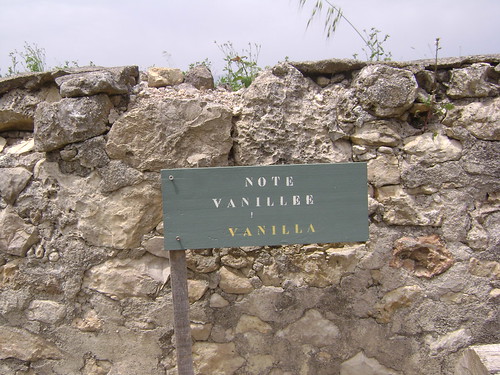
Roles in perfumery: Fits with everything, as long as it’s not overdone - in which case it will dominate! Remember, every time you're adding vanilla, imagine you're adding 5 times the actual amount. Vanilla absolute is a key component in amber bases, ambreine accord, Ambery Orientals, in flavouring tobacco and giving tobacco fragrances their characteristic deep-sweet nuance. In Fougère vanilla absolute proves very useful in smoothing out the rough edges of all the herbaceous notes, and sweetening the bitterness of the oakmoss and coumarin notes.
Vanilla in Flavour: Vanilla is the world's most popular ice cream flavour, and is used in the confectionary world almost in the same way salt is used in the savoury one.
Perfumery Uses/Blending Tips: Vanilla goes with everything, but in particularly shines when paired with tonka beans, orris butter, leather notes, sandalwood, rose, frankincense, galbanum absolute, labdanum, styrax, bergamot, yang ylang, tuberose, tobacco, mandarin, sweet orange, blood orange, vetiver, oakmoss, patchouli and lavender (so no wonder it’s included in Fougère course).
Vanilla may seem tame and agreeable, but in fact it fortifies itself overtime and can take over a blend. Keep in mind that whichever amount you put is equivalent to 5x vanilla. Which is a good thing - because vanilla is a very popular and costly material. If you find vanilla overbearing even in its tiniest amounts, consider using vanilla tincture instead, from the cured vanilla pods. Recipe for doing so appears in my book (formula 10.1.4).
Formula 10.1.4 Vanilla Tincture
36 g Vanilla Pods (about 16-18 pods)
100 mL Alcohol
Split the pods lengthwise and scrape the “seeds.” Finely chop the pods. Put in a jar and cover with alcohol. Shake frequently. Ready for filtering after a minimum of 1 month.
This is more concentrated than vanilla extract used in cooking and baking, but less concentrated than a 50% dilution of vanilla absolute, so it can give a nice, subtle woody-vanilla effect without being overpoweringly sweet.






